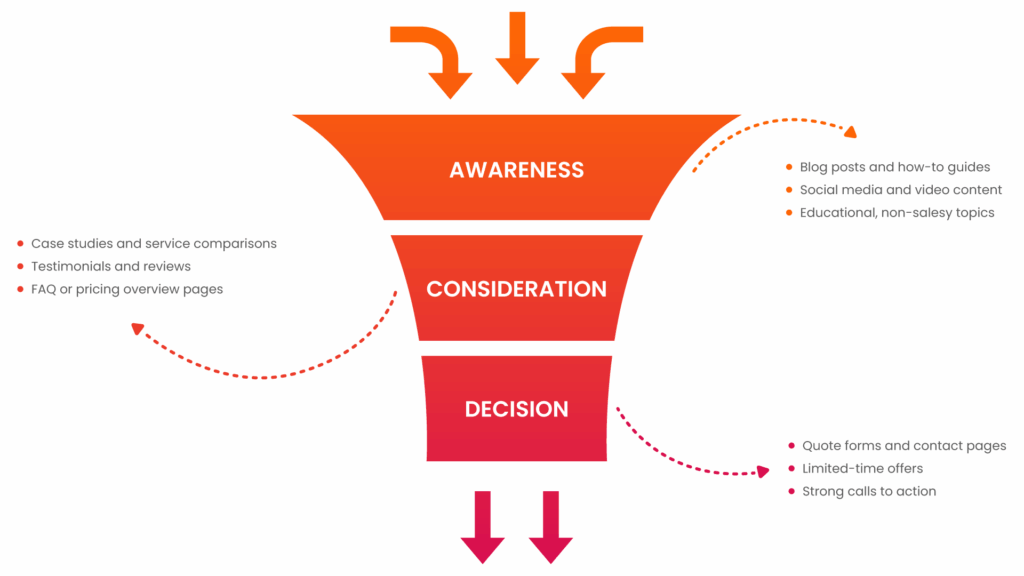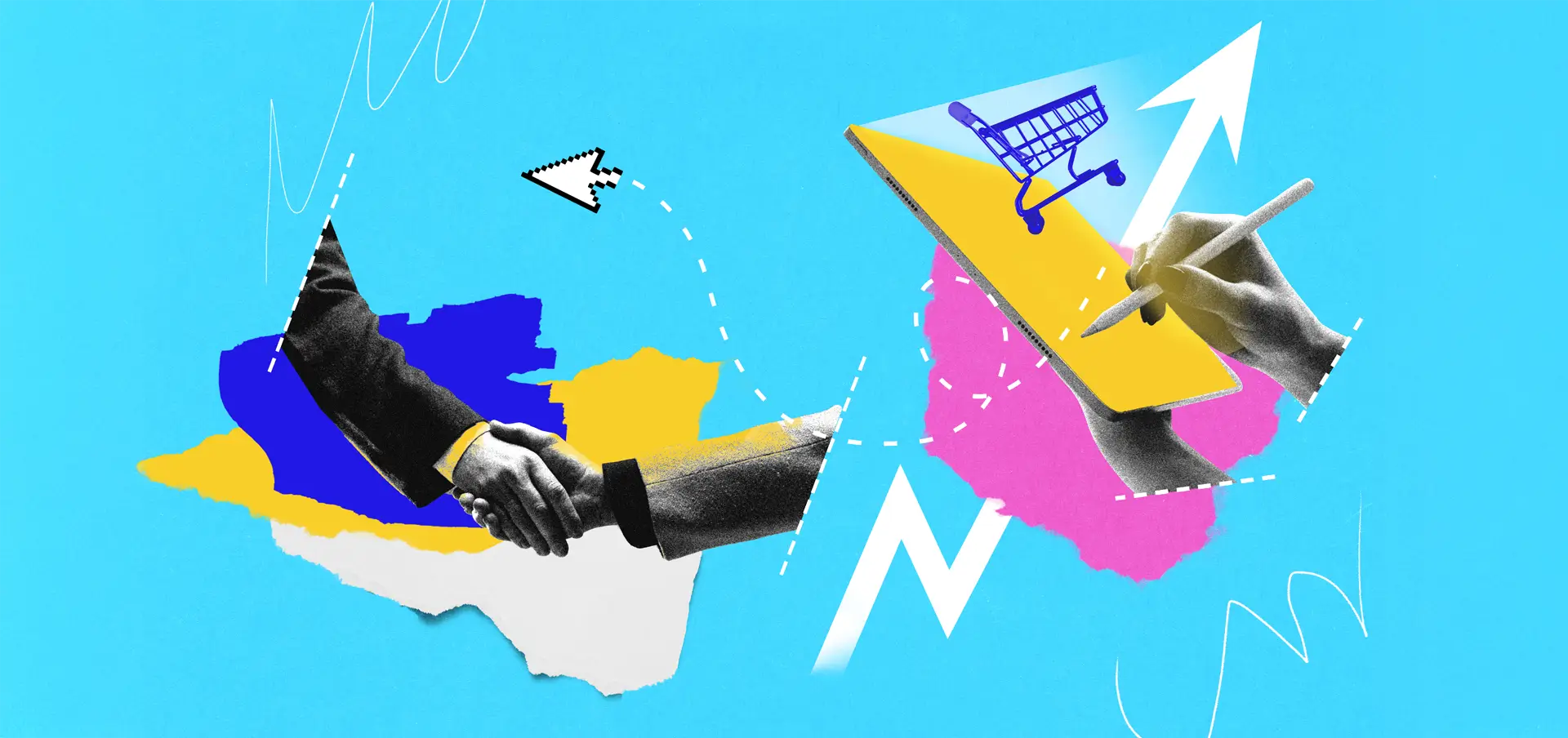What Is Funnel Marketing?
Think of funnel marketing like dating. You don’t propose on the first date—you build interest, earn trust, and move things forward at the right pace. The same goes for marketing.
A marketing funnel maps how people move from discovering your business to finally saying yes. At the top, they’re exploring. In the middle, they’re comparing. At the bottom, they’re ready to act.
It’s been the go-to strategy for years because it works. Funnels help teams plan content around buyer intent and guide people through the journey without pushing too hard, too soon.
But here’s the catch: not everyone follows the script anymore.
Marketing Funnel Stages (Explained Simply)
The digital marketing funnel is usually broken into three stages: top, middle, and bottom. Each one lines up with how ready a person is to make a decision, and what kind of content makes the most sense for them at that moment. The three stages are broken out below:
- Top of Funnel (Awareness)
This is where people are just discovering you. They might not even know exactly what they need yet. Think blog posts, social media, or YouTube videos.
Example: “How to Choose the Right Lawn Care Provider” - Middle of Funnel (Consideration)
Now they’re comparing their options and trying to figure out who they trust. This is where you serve up case studies, comparison pages, or FAQs.
Example: “Why Our Clients Stick with Lawn Company A Year After Year” - Bottom of Funnel (Decision)
They’re ready to choose and just need a nudge. This is where your strongest CTAs live, like contact pages, quote forms, or limited-time offers.
Example: “Get a Free Quote in 24 Hours”
If you’re thinking this structure still makes sense, you’re right. But the way people move through it has changed, so let’s talk about the new flow.

So… What’s Changing? (Why Funnel Marketing Isn’t a Straight Line Anymore)
In theory, the funnel moves in nice, tidy stages. In reality though, most people don’t shop or make decisions that way anymore.
Thanks to tools like Google, ChatGPT, and online reviews, buyers can go from curious to convinced in a single session. They might start by comparing providers, loop back to a blog post, then fill out a quote form five minutes later.
What used to look like a funnel now looks more like a loop, a zigzag, or a web. People are jumping in at different points, skipping steps entirely, or researching across channels at lightning speed.
According to this Nielsen Norman Group study, even with long sales cycles, users often enter your site ready to make a decision. They’ve already done the homework elsewhere.
💡 Today’s buyers aren’t waiting to be ‘nurtured.’ They’re showing up informed—and ready to act.
From Funnels to Pillars: Rethinking the Journey
If the marketing funnel was about guiding people step by step, the modern digital marketing funnel is more like a collection of solid entry points. Think of your strategy as a set of pillars—each one offering value, standing on its own, and connected to the rest.
Instead of assuming someone starts at the top and works their way down, build content that meets them wherever they land. That might be a blog post, a case study, a service page, or a special offer. Every piece should help them get what they need and lead them to the next step if they’re ready.
Strong, standalone content that connects across your site creates a better experience for users and increases your chances of turning interest into action, no matter where the journey begins.
Why Funnel Thinking Still Matters (Kind Of)
We’re not saying toss out the funnel completely. It still has a place.
Funnel thinking is a helpful planning tool. It reminds you to create content for people at different stages of awareness—from just learning about a problem to being ready to solve it today.
What’s changed is how people move through that content. Your audience picks their own path now. It might be out of order, lightning fast, or spread across channels.
That’s why the best content strategies today blend funnel awareness with the clarity of pillar-style content. You still cover the journey, but in a way that lets buyers enter wherever they’re ready and find their next step with ease.
Final Thoughts: Meet Buyers Where They Are—Not Where You Want Them to Be
Funnel marketing isn’t dead. It’s just no longer a straight line. Today’s buyers show up informed, bounce between stages, and expect to find what they need right away.
Your job isn’t to force them through a sequence. It’s to offer helpful, relevant content wherever they land—whether they’re just curious or ready to make a move.
If you’re ready to build a strategy that works with how people actually buy, we can help.


